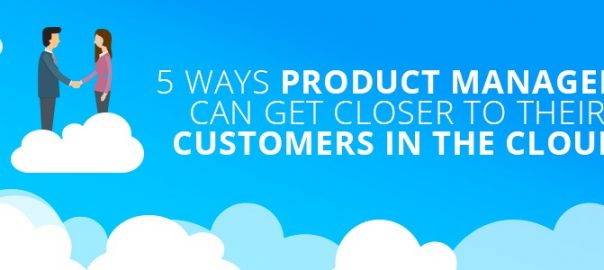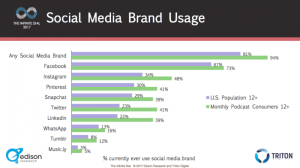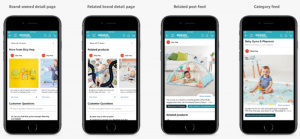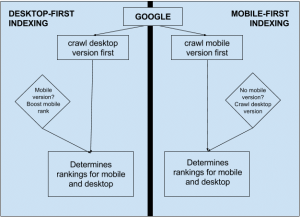
As a Product Manager, it‘s always your job to expand your understanding of the customer by finding out what they like and need, learning about problems they’re having, and listening to their ideas for new and improved features.
Focus groups, surveys, feedback forms, advisory boards. Shudder! As a Product Manager, these formal methods of gaining customer insights to make “data-driven” product decisions give me pause. They do have their place, of course, but oftentimes, they’re expensive and time-consuming to prepare and administer.
While I can’t say enough about the importance of good UX research, we cannot rely on this alone in the fast-paced DevOps, cloud-based world in which many of us work. We feel this challenge especially acutely in the cloud security sector where rapid response is essential to keeping customers safe.
So what are some alternatives to the formal feedback tools mentioned above? How can you obtain high-quality information in a way that’s better suited to a fast-paced DevOps environment (and more budget conscious at the same time)?
Nothing will replace direct communication with the customer, and empirical data can be useful, but consider the five techniques outlined below. I use one or more of them daily to add to my understanding of the customer’s perspective, and find that they are tremendously valuable in helping us refine and enhance our products.
1 Leverage Your Sales Team
Does this sound obvious? Perhaps, but I am always surprised that Product Managers aren’t having more product development conversations with their sales teams.
The sales team doesn’t replace first-hand interaction with the customer, but they have hundreds of customer interactions each week and can synthesize customer attitudes, needs, and pain points for you quickly and easily. Start listening to these folks more: you’ll be amazed at how quickly you gain insights into the way customers use your products, and you’ll also hear about features they want you to add.
I’ve been lucky to work with some amazing Sales Engineers and Sales Reps in my career. I liberally invite them to product planning meetings and let them join the ones they find relevant. (I also drink beer with them to find out what they really think.) They know what features win in demos, during implementation, and during ongoing customer use. So count them in, and use them as a window into the customer’s world.
2 Use Your Own Product
This is also affectionately known as eating your own dog food.
When I built educational software, we used to take our own online courses. I learned a ton about operations management, 6th grade math, and all kinds of things I didn’t need to know about, but the point is: I was able to take my Product Manager’s hat off and complete tasks closer to the way an end user would. Instead of looking at a collection of features, I was able to complete tasks, experience workflows, and get a sense of the product’s continuity, clarity, effectiveness, and ease (or difficulty) of use.
When I worked with a company that developed medical imaging technology, I obtained permission to set up the hardware and program the software in a lab environment. Granted, I had a technician looking over my shoulder to make sure I didn’t nuke myself — or damage some very expensive equipment — but getting my hands on the hardware and configuring the software enabled me to gather important insights and learn nuances that can only come from direct experience, and as a result, I was able to pass on recommendations that improved the product as it went from beta into production.
3 Follow Customers on Social Media
Everybody uses social media these days, and for many consumers, Tweeting an organization with feedback about their product or service is a reflex. Tapping into this information will give you a continual stream of snippets that show how they view or experience your product.
It feels great to get a happy tweet when a new feature rolls out. It doesn’t feel nearly as good when you get the inevitable complaints and criticisms. But I’ve found that if you think of these as the uncut gems that help you improve, you won’t take it personally when @lolzcat57 trashes the feature you’ve worked on for the last six weeks.
4 Talk to Your Support Team
Support provides a fascinating window into areas of the product that need refinement — confusing workflows, settings/configuration “gotchas,” and other rough places that allow the customer to fumble. Mine their data and do it often.
When a customer needs to contact Support to figure out how to accomplish a task, this is a big red flag. It is relatively straightforward to categorize this data and determine which parts of the product are not intuitive to users.
Not only does lightening the load on Support improve the customer experience, but it cuts costs, sometimes dramatically.
5 Always Ask Why
Sometimes customer feedback can seem wrong-headed or irrelevant (and sometimes it is). But before judging or dismissing, take the time to ask why. Find out what’s behind the request.
If they tell you they want feature ABC, thank them for the suggestion and ask why they want it, what goal it would help them accomplish, and how they would use it. That will give you the context you you need in order to evaluate the true usefulness of their request.
A few weeks ago I received a feature request that completely puzzled me at first. I knew I couldn’t implement it because it could cause a problem for a less savvy customer if enabled accidentally. Lucky for me a member of the sales team was pushing hard for this feature, so I took the time to get on the phone with the customer and find out what he wanted to accomplish and why. When I did, he opened my eyes to a new way of using the product that I hadn’t seen before. Properly designed and implemented, the customer’s request would be a valuable addition, but I wouldn’t have discovered this if I hadn’t explored the “why.”
A Final Word . . .
You don’t have to be formal or perfect to get great customer insights every single day. The approach I’ve outlined for getting closer to your customers is ideally suited to our space — the cloud security sector — where rapid development and continual evolution are essential to keeping customer data and systems safe. Using this approach, you won’t end up with as much empirical data as you would using formal feedback methods like focus groups and surveys, but you will gather a wealth of anecdotal information that will provide immediate and ongoing insights into the real-world experience of your customers as they actually use your product.
Give it a try. The rewards can be immense.
Business & Finance Articles on Business 2 Community(75)
Report Post






